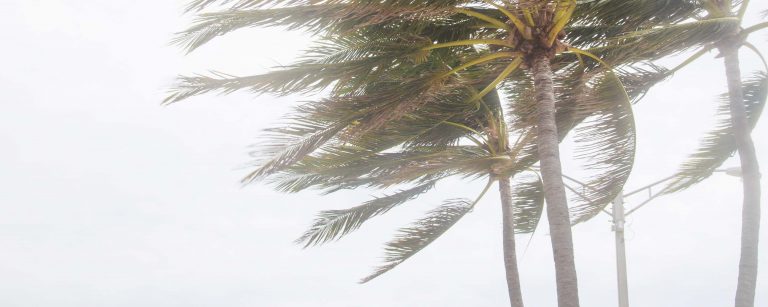By TIM SMITH
From Emily and Fabian to Fay and Gonzalo, their names are notorious for the destruction they caused when they visited our shores.
Many of us don’t even know how to pronounce the name of the tropical cyclone heading our way when it first forms – but as Joaquin and Isaias have shown, we usually do by the time they reach full strength.
And with more and more hurricanes and tropical storms forming in the Atlantic in recent years, the team that names them has never been busier.
Mark Guishard, the director of the Bermuda Weather Service, is the island’s representative on the World Meteorological Organisation’s Hurricane Committee, which runs the rule over the Atlantic basin list of names.
“It’s perhaps the highest profile thing that the hurricane committee does in the public eye, and it’s probably the thing that takes the least amount of time,” said Dr Guishard.
The committee serves North and Central America and the Caribbean, which comprises a wide range of languages including English, Spanish, French and Dutch.
Dr Guishard said: “Given that the region is made up of a number of different cultures and languages, we have to be sensitive to all the members.
“People might see names they are not necessarily familiar with in their own culture, and pronunciation that they are not necessarily familiar with.”
According to the website geology.com, the practice of naming hurricanes began a few hundred years ago.
It was common for people in the Caribbean to name the storms after the saint listed by the Roman Catholic liturgical calendar on that day.
“When two hurricanes struck on the same date in different years, the hurricanes would be referred to by names such as Hurricane San Felipe the first and Hurricane San Felipe the second.
“In the early days of meteorology in the United States, storms were named with a latitude/longitude designation representing the location where the storm originated. These names were difficult to remember, difficult to communicate and subject to errors. During the Second World War, military meteorologists working in the Pacific began to use women’s names for storms. That naming method made communication so easy that in 1953 it was adopted by the National Hurricane Centre for use on storms originating in the Atlantic Ocean. Once this practice started, hurricane names quickly became part of common language, and public awareness of hurricanes increased dramatically.”
Meteorologists for the Atlantic Ocean did not start using men’s names until 1979. Twenty-one names were chosen for each year, with each starting with a different letter of the alphabet. The letters Q, U, X, Y and Z were not used, as there are so few names beginning with them.
According to geology.com: “During even-numbered years, men’s names were given to the odd-numbered storms and during odd-numbered years, women’s names were given to odd-numbered storms.”
Today, there is no specific guidance for how names are chosen – members simply submit proposals.
Dr Guishard said: “We have to ensure none of the proposed names has any historical significance that would make it insensitive.
“It has to be a name that hasn’t already been used and retired or is too similar to something already in the list.
“There’s back and forth in the committee about which names are chosen. It’s an amicable process.”
Hurricane names are retired when they are deemed to have caused death or so much destruction that they will have a lasting impact on the psyche of a country.
Storms have been named under the current system since 1953. Since then, 93 names have been retired, including Fabian – the only storm to cause fatalities in Bermuda in the modern day – which was dropped at the island’s request in 2003 and replaced by Fred.
Other storm names to be retired include Laura, Eta and Iota last year, Dorian in 2019 and Florence and Michael in 2018.
Igor, which hit Bermuda in 2010, was retired after killing four people in the Caribbean, Newfoundland and United States. Joaquin, which caused relatively minor damage when it struck the island in 2015, was retired after killing 34 people at sea and devastating the Bahamas.
Names are used alphabetically and recycled every six years, meaning that the 2020 list will be reused in 2026, with replacements for Laura, Eta and Iota.
In the record-breaking season of 2020, when 30 storms were named, the committee exhausted its list and had to dig into the Greek alphabet.
However, the committee has now concluded Greek alphabet names caused so much confusion when they were translated into different languages – detracting from their safety messaging – that they will not be used again.
A supplemental list of Atlantic tropical cyclone names has been created instead. For anyone who is interested, the 2021 list of hurricane names reads as follows: Ana, Bill, Claudette, Danny, Elsa, Fred, Grace, Henri, Ida, Julian, Kate, Larry, Mindy, Nicholas, Odette, Peter, Rose, Sam, Teresa, Victor and Wanda.

